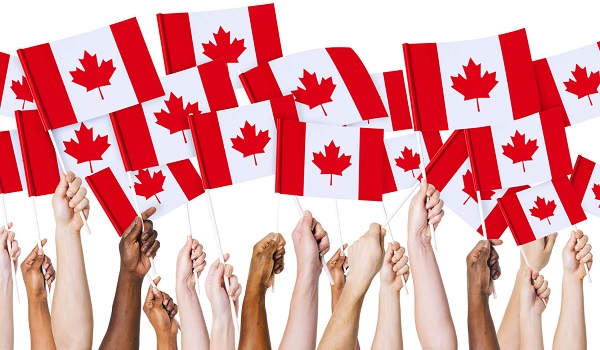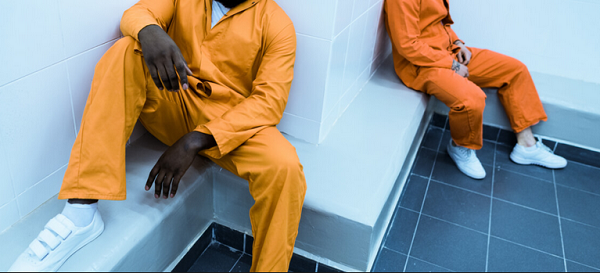Amid different opinions from Canadians, will Ottawa maintain its immigration plans?
Canada is set to unveil the latest targets for how many new residents it hopes to welcome in the coming years.
The annual announcement of permanent resident levels, something Immigration Minister Marc Miller must do in Parliament on or before Nov. 1, is the kind of dry fare that has traditionally drawn little attention, serving largely as a governmental formality amid high levels of public support for immigration.
But this year’s numbers are expected to face more scrutiny given a surging discussion of whether Canada has the capacity and the infrastructure it needs to accommodate the hundreds of thousands of newcomers it is bringing in.
And, as the government seeks to maintain public support for immigration, some say how Prime Minister Justin Trudeau’s Liberals approach immigration — and the messaging around it — will be key.
The government’s current immigration plan, unveiled in 2022, aimed to bring in 465,000 new permanent residents this year, 485,000 in 2024 and 500,000 in 2025. The immigration ministry is on track to meet the 2023 target.
The upcoming plan, however, will look at the numbers for the next three years.
Recent polls suggest that Canadians’ appetite for more immigration may be waning. A Nanos report in September showed 53 per cent of Canadians wanted Ottawa to accept fewer immigrants, up from 34 per cent in a similar poll in March. Then, an online survey by Research Co. in October found 38 per cent of Canadians said they believe immigration is having a mostly negative effect, up 12 percentage points from research conducted a year ago.
“Some people are feeling there’s too much immigration, when it comes to the fact that it’s driving up the housing cost, exacerbating the housing shortage, making the connection between immigration and health care and education,” says Toronto Metropolitan University professor Rupa Banerjee, whose research focuses on immigrant employment integration.
“Immigration is on people’s radar more and the plan will be scrutinized a lot more closely.”
So far, the government has seemed inclined to stay the course.
“I don’t see a world in which we lower it, the need is too great,” Miller told Bloomberg in August. “Whether we revise them upwards or not is something that I have to look at.”
Magdalene Cooman of the Conference Board of Canada said Canadians need to understand the immigration plan’s long-term objectives are to address the country’s aging population and boost economic growth.
While immigrants do need housing, health care and other government services, she said, people shouldn’t lose sight of the fact that newcomers are also part of the solutions to those challenges, and contribute to the workforce, whether it’s by building new homes or caring for those in hospitals.
“There is a reason why the federal government has moved in this direction,” said Cooman, the board’s interim associate director in charge of immigration research.
“Immigration is really the only way to increase population, to support population growth and to support the future of Canada.”
A recent report by Desjardins said the country’s working-age population (those 15 to 64) would need to grow by just over two per cent annually in order to offset the impacts of aging. That growth relies largely on immigration.
“What’s the optimal level of immigration to Canada? This can be a tough question to answer, as ‘optimal’ is in the eye of the beholder,” said the report. “It depends on the policy objective that immigration is meant to achieve.”
While the short-term strains of the population growth are already showing, the report suggested the federal government could restrict the admission of non-permanent residents such as international students and temporary foreign workers.
Despite the lagging infrastructure, the conference board’s Cooman warned that any pause to the long-term immigration strategy could create other unintended problems.
“I’m not opposed to increasing the levels because I understand the long-term growth strategy,” said Cooman. “But I am opposed to increasing the levels without a strategy to show us how all the infrastructure can be built to accommodate more people in the country. You can’t have one without the other.”
Whom Canada brings in matters, observers say.
Permanent residents come to Canada under the economic, family or humanitarian classes. In 2023, about 58 per cent of them will have been selected based on their education backgrounds and skills; 23 per cent through sponsorships by spouses or children and grandchildren; and the rest as resettled refugees and protected persons.
Using real wages as a proxy for relative productivity of different groups, the Desjardins report said economic immigrants in particular are outperforming the typical Canadian.
Several observers credit the immigration ministry with fine-tuning the way it selects economic immigrants by better matching the skills of candidates with the labour market needs, and targeting those with backgrounds in health care, transportation, trades, agriculture and STEM occupations. Officials, for instance, have relaxed some rules for immigrant physicians and created a special immigrant class to attract workers in construction-related trades.
To immigration lawyer Betsy Kane, the bigger challenge for Miller is to overcome the public backlash and explain his immigration strategy.
“Between the home construction effort and the easing of the doctor efforts, you’re potentially reducing the lag in public opinion,” said Kane, vice-president of the Canadian Immigration Lawyers Association.
Banerjee of TMU said the government has to be more specific in explaining the immigration plan than just floating the big numbers around.
“We are bringing in trades and transport workers and there’s a number of pilots now that are working to try and bring people into underserviced smaller and rural communities. Many of them are very small (scaled), but there’s been efforts,” said Banerjee.
“A lot of that is lost, because all we see in the headlines is ‘500,000 newcomers being admitted.’”
In August, a CIBC study found there were about one million more people living in Canada than official government estimates, including international students, foreign workers, asylum seekers and undocumented migrants. (Unlike permanent residents, temporary residents are uncapped and not included in the immigration plan.)
“We need to make sure these immigration targets also include temporary migration numbers. We cannot have uncapped temporary migration and then pretend that is all of the immigration,” said Banerjee.
In a letter to Miller this month, the Business Council of Canada urged the government to prioritize highly skilled economic-class immigrants to fill high-paying jobs, and raise the ratio of the economic immigrants in the mix from 60 per cent to 65 per cent by 2025.
While the number of job vacancies requiring lower levels of skill and education has declined significantly, the council said unfilled job openings for highly trained and educated professionals remain stubbornly high.
“Enhanced economic immigration is essential,” wrote Goldy Hyder, president and CEO of the council, whose member companies support more than six million jobs across Canada. “If we do not seek this skilled labour, our economic rivals will.”
But employers aren’t the only group that would like to get a bigger piece of the permanent-resident pie.
Advocates for refugees are urging Ottawa to raise the levels of resettled refugees up from about 10 per cent to 15 per cent to accommodate the growing number of displaced migrants around the world, which now stands at 108 million.
“If we are able to increase Canada’s resettlement targets, it would support the reduction of the backlog,” said Gauri Sreenivasan of the Canadian Council for Refugees, adding that a recent government audit showed 99,000 refugees were waiting in the queue by December 2022.
NDP immigration critic Jenny Kwan said she’s concerned about the backlash against the immigrant community.
“No good will come out of that because we have already lived through racism and discrimination in Canada’s history,” she said. “The government has to have a housing plan and an infrastructure plan for our community.”
Tom Kmiec, the Conservative immigration critic, did not respond to the Star’s requests for comment. This summer, his party leader, Pierre Poilievre, did say the immigration system is broken, but sidestepped reporters’ questions about whether he would change the current targets.
This article was reported by The Star


















